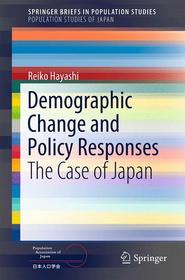
Demographic Change and Policy Responses
The Case of Japan
Sorozatcím: SpringerBriefs in Population Studies;
-
12% KEDVEZMÉNY?
- A kedvezmény csak az 'Értesítés a kedvenc témákról' hírlevelünk címzettjeinek rendeléseire érvényes.
- Kiadói listaár EUR 32.09
-
13 309 Ft (12 675 Ft + 5% áfa)
Az ár azért becsült, mert a rendelés pillanatában nem lehet pontosan tudni, hogy a beérkezéskor milyen lesz a forint árfolyama az adott termék eredeti devizájához képest. Ha a forint romlana, kissé többet, ha javulna, kissé kevesebbet kell majd fizetnie.
- Kedvezmény(ek) 12% (cc. 1 597 Ft off)
- Kedvezményes ár 11 712 Ft (11 154 Ft + 5% áfa)
Iratkozzon fel most és részesüljön kedvezőbb árainkból!
Feliratkozom
13 309 Ft

Beszerezhetőség
Még nem jelent meg, de rendelhető. A megjelenéstől számított néhány héten belül megérkezik.
Why don't you give exact delivery time?
A beszerzés időigényét az eddigi tapasztalatokra alapozva adjuk meg. Azért becsült, mert a terméket külföldről hozzuk be, így a kiadó kiszolgálásának pillanatnyi gyorsaságától is függ. A megadottnál gyorsabb és lassabb szállítás is elképzelhető, de mindent megteszünk, hogy Ön a lehető leghamarabb jusson hozzá a termékhez.
A termék adatai:
- Kiadás sorszáma 1st ed. 2024
- Kiadó Springer Nature Singapore
- Megjelenés dátuma 2025. december 9.
- Kötetek száma 1 pieces, Book
- ISBN 9789811304590
- Kötéstípus Puhakötés
- Terjedelem67 oldal
- Méret 235x155 mm
- Nyelv angol
- Illusztrációk VIII, 67 p. 28 illus., 27 illus. in color. 700
Kategóriák
Hosszú leírás:
"This book explores how people have perceived and acted on the changes in four different population components, namely, fertility, mortality, and mobility, through the creation and development of Modern Japan to the present day. With the highest life expectancy in the world; the highest proportion of the elderly; very low fertility, below the replacement level; and a limited number of international migrants, Japan’s population indicators are unique. Around 2008, the population of the archipelago started to decrease at the same pace as it had previously increased. To understand this phenomenon, it is necessary to look back in history and examine the facts and ideas that shaped the Japanese population. From the Meiji to the Heisei eras (1868–present), substantial changes occurred not only in the numbers but also in the perception and norms that people take for granted. These changes are traced, side by side, through the chapters on fertility control, health and population ageing, urbanization and internal migration, international migration, and international cooperation in the field of population and development. The book illustrates not the uniqueness that isolates Japan from the rest of the world, but the reality of a population that has faced one situation at a time, offering readers a perspective for understanding human society at large.
Traces population change and related policies in Japan since the Meiji era up to the present (1868– present)
" Több
Tartalomjegyzék:
Fertility:contradicting perception and ambivalent effectiveness.- Health:The origin of universal health coverage to the world’s longest life expectancy.- Policies to accommodate the world’s quickest population ageing.- Urbanization and internal migration:was it policies or population structure?.- International migration: the Lewisian turning point of Japan.- Japanese international cooperation in the field of population and development.
Több






